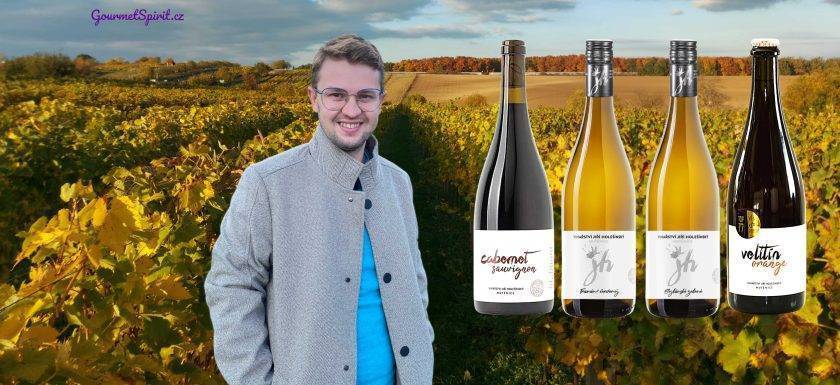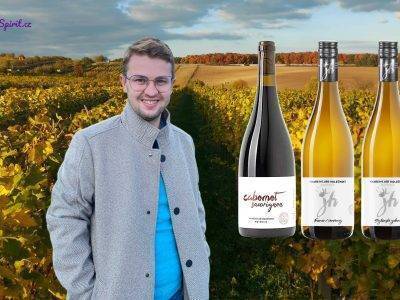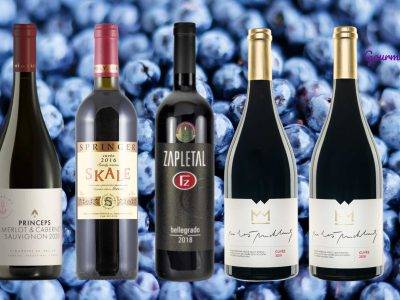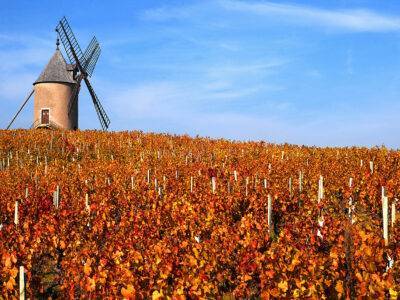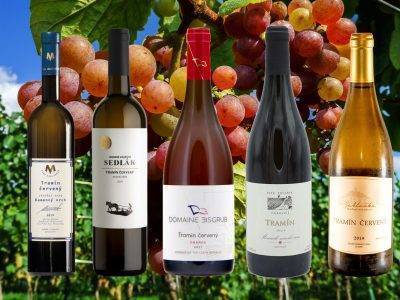The Jiří Holešínský winery continues the family winemaking tradition. It was founded in 2014. The whole family takes care of 3 hectares of different varieties. However, the production of wine is mainly taken care of by the young and talented Jiří, who previously gained valuable experience during a five-year internship with the living legend of Moravian viticulture and winemaking, prof. Miloš Michlovský. It processes grapes only from its own vineyards. In the offer of Vinařství Jiří Holešínský you will find dry, semi-sweet wines, from barrique barrels, sur-lie or natural sweet wines such as straw wines. The winery has won several awards both in the country and abroad. In our opinion, his dry Tramín 2021 is one of the best wines from this variety in the Czech Republic. Get to know more about this talented winemaker from Mutěnice in Slovakia thanks to a very open interview.
Key facts
- Mutěnice, Slovácko wine sub-region, Moravia
- 10.000 bottles a year
- Winemaker: Jiří Holešínský
- 3 ha of own vineyards | 16,500 heads, conventional viticulture
Prestigious wines
- Cabernet Sauvignon
- Veltlín Orange (Grüner Veltliner Orange)
- Tramín červený (Gewürztrmainer)
- Sylvánské zelené (Sylvaner)
- Pinot Noir
Wine is a drink for communication.
It's nice to talk about it.
When did you first encounter wine and when did you first drink it?
From a young age, although I probably shouldn’t say that. In Moravia, it is often connected with folklore tradition, which is passed down from father to son. Even as little three- and four-year-olds, we went in costumes to various celebrations, e.g. vintage. I must have tasted wine there, but I don’t remember it.
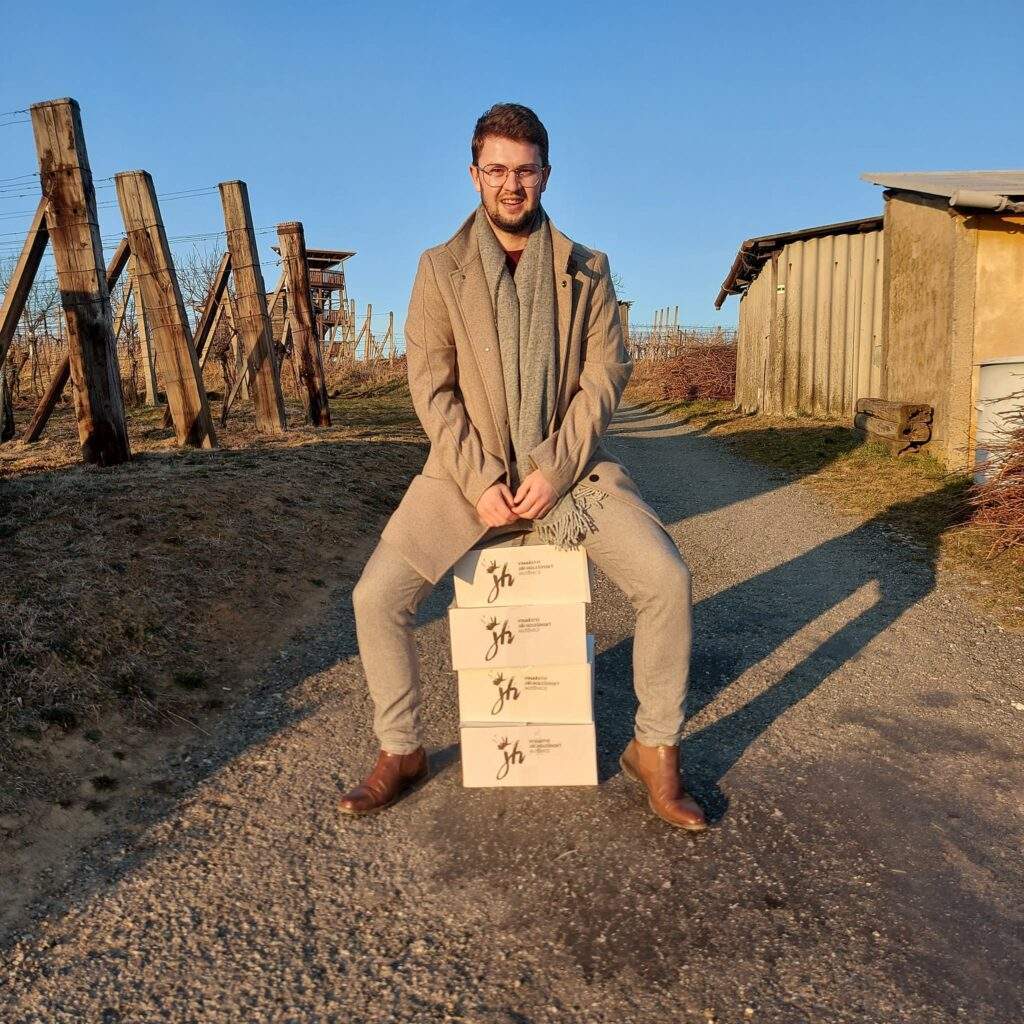
But then there was a long break. When I was a teenager, I didn’t want to go and help in the vineyard. I wanted to go outside with boys after girls. Even in my later years I tried to be as far away from the vineyards as possible. I graduated from the Prague Conservatory and I am therefore a musician by training.
I enjoy making wine because it's not beer.
A brewer's goal is usually to make the same beer every year.
As a winemaker, I always want to create a better wine than the year before.
So how did you become a winemaker? Where and how did you gather your oenological experience?
I didn’t get into college, so I applied to the Faculty of Horticulture at the Mendel University in Lednice. I got there without entrance exams thanks to a good grade point average at the conservatory. After the first semester, I realized that I already have more experience from work than from school. And so I decided to sign up for an internship with the legend of Moravian winemaking, prof. Michlovské to Rakvice. I ended up gathering experience there for 5 years. This is where I started to enjoy it and gradually took over and developed the vineyard from my father. I started buying new plots and planting new vineyards. Thanks to the income from the practice, I had more financial options than my peers.
What was the state of the family vineyard when you took it over?
It was just a few ares left by my father and grandparents – a total of no more than 0.5 ha, often old vineyards that do not always bear fruit. Back then it was more of a hobby after work and the result was regular cask wine.
I try to create red wines of maximum quality at a relatively affordable price, which means a low profit.
How was the practice with prof. Michlovsky?
The level of technology at Mr. Michlovský’s was already completely different 20 years ago – from stainless steel vessels, through vinifiers to countless high-quality barrique barrels. The way of blending was at a very high level. Wines were blended from charred barrels, stainless steel vessels, small or large barrels, which gave me a whole new perspective on how to make red wines. I learned a lot there. Although it is not easy to have a boss over you and there were definitely disagreements, I still evaluate the practice with Prof. Michlovský as “priceless”.
What was your role in his winery?
I started from scratch because I had no experience. The main oenologist was Mr. Holub, who worked in the winery with a few employees on about two million liters of wine. I participated in the processing of wine, its training, blending and manual work in the cellar. Over time, we also tasted and shared our opinions. I ended up doing almost everything in the winery – from working in the vineyard to bottling.
My red wines from barrels are authentic - nothing extra has been added to them.
How many people worked at Mr. Michlovský's internship?
When I worked at Vinselekt Michlovský, around 5 manual workers worked in the cellar. There was also a period when there were only three of us for everything. Nowadays it is much more.
How did it happen that you wanted to have your own winery?
When I was getting paid by working at Michlovský, I started buying land. Father had something to negotiate, but he did not complete the deals. I went into it with great vigor. I started making my own wine and joined the wine association in Mutěnice. My own wine, which I started selling at various events such as open cellars, had a good response. I enjoyed making wine and at the same time I had a new financial income. I invested almost all the money I earned in new plantings. My parents also supported me financially in other investments, for which I am very grateful. Without their help, I would not have built the current vineyards and winery.
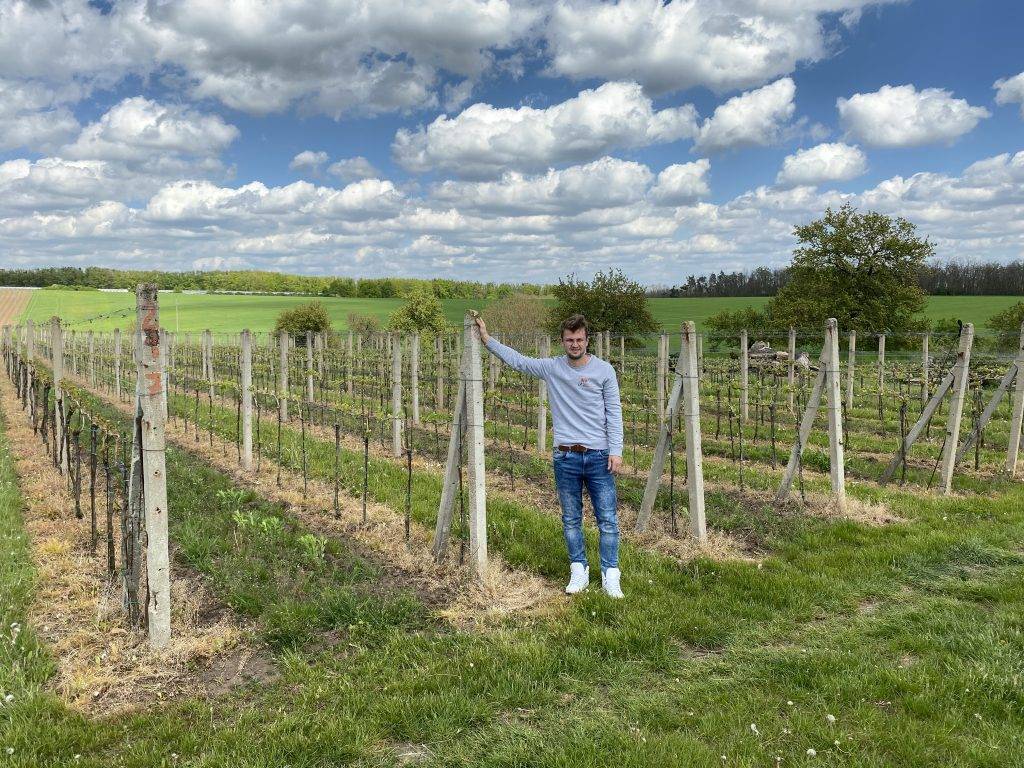
You are a family winery. So who is involved in the operation of the Jiří Holešínský winery?
My father helps me with tractor work. Mother, grandmother and aunt again lend a hand to the work with green works. In short, everyone in the family helps me, including my girlfriend. That is why we declare that it is a family winery, even though it is named after me.
How would you describe the philosophy of Jiří Holešínský winery?
When I started, I believed that I would only make the best wine from the best ingredients, from the best barrels. But the practice is completely different. In my youth I had a vision that I would create “French” barrique, sur-lie or orange and authentic wines. In the end, however, I found out that I had these wines in storage for maybe 5 or 6 years. Nobody wants those wines, firstly because of the higher price, but also, according to me, 99% of consumers want light, fresh wines with primary aromatics.
In some years I make more complex wines from barrels. For example, dry Riesling or Tramin, I blended wines from barrels with those from stainless steel containers. However, I make 90% of my white wines only in stainless steel vessels to produce fresh fruity wines, with selected yeast, lower fermentation temperature and 18-24 months in the bottle.
It’s different with red wines. I try to keep them at a higher level, which is reflected in the required production technology and in the price. I have never made red wine in a plastic or stainless steel container before. For red wines, I always work with barrels. Last year I did not like the resulting wine in barrels, so I did not bottle it and sold it only as a barrel wine. This year we invested in really high-quality barrique barrels. If there is no quality raw material, then we will dry some of the grapes.
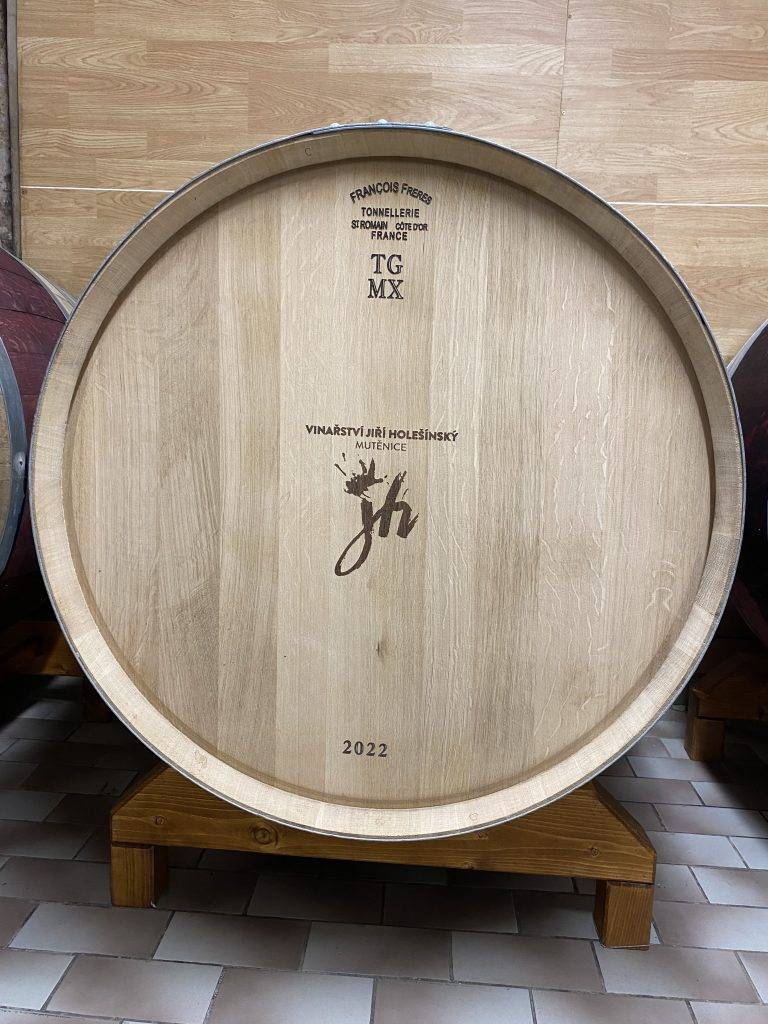
What is the varietal composition of your vineyards?
The song is terrible. Everything possible (note laughter). However, I am trying to weed out the vines gradually. The oldest of them is fifteen years old. These are mostly young (max. 5 years old) vines that I personally planted. I mainly plant varieties that belong to Mutěnice – Rhine Riesling, Sylvánské zelené, Tramín red. I would like these three varieties to become the flagship of our winery. Of the blue varieties, I prefer Pinot Noir and Cabernet Sauvignon. We grow Hibernal, Pálava, Solaris and Muscat Ottonel from modern varieties. There are only about ten varieties with more than 1000 heads. We sell grapes of varieties that are less represented in the vineyard or make burčak from them. We have already stopped producing and selling cask wine.
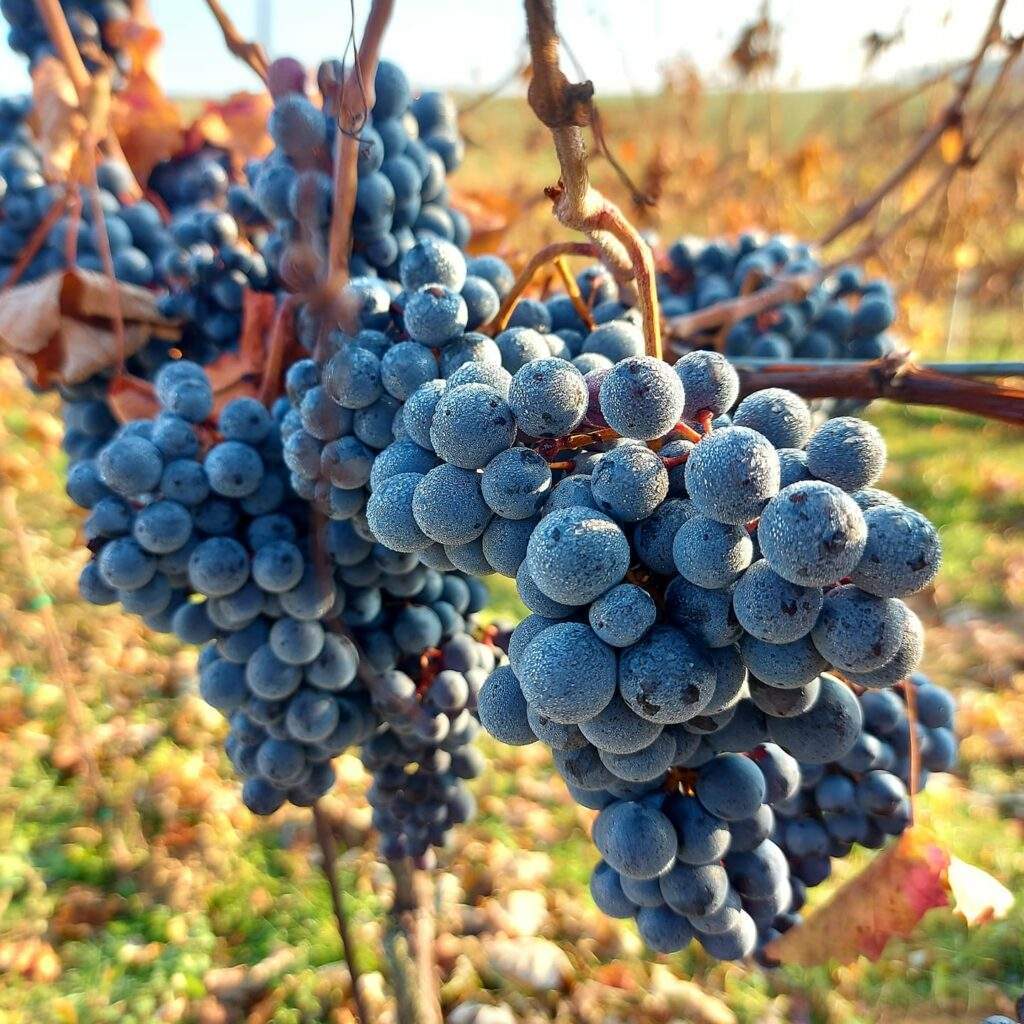
What is the mix of produced wines?
95% of our production consists of white wines. Every year I try to make Cabernet Sauvignon or Pinot noir,which I leave to mature in barrel for approximately 18-24 months. Two thirds of the production are dry wines, and its share gradually increases every year.
Which three wines do you consider the flagships of your winery?
Our winery is best represented by dry Gewürztraminer and Cabernet Sauvignon and semi-dry Sylvaner.
Which of your wines are you most proud of?
Pinot noir 2018, which was only the second Pinot Noir I made. 2018 was an excellent vintage and we picked the grapes at 26° CNM. The wine has a light brick color, almost 16% alcohol with a full taste of compote plums.
What wine do you consider to be the best you have ever tasted and what impressed you about it?
Welsch Riesling 2017 from Ořechová hora from Mikrosvín winery. Dry wine with 7g of residual sugar, some of the grapes were definitely attacked by botrytis. The aromatics were full of coconut with white chocolate – almost like Raffaello.
How would you describe the terroir of your vineyards?
I have 2 vineyards that are oriented to the south or southwest. The subsoil is very diverse even on a three-hectare vineyard – partly clay and partly brown soil. The wines have a beautiful pure varietal character.
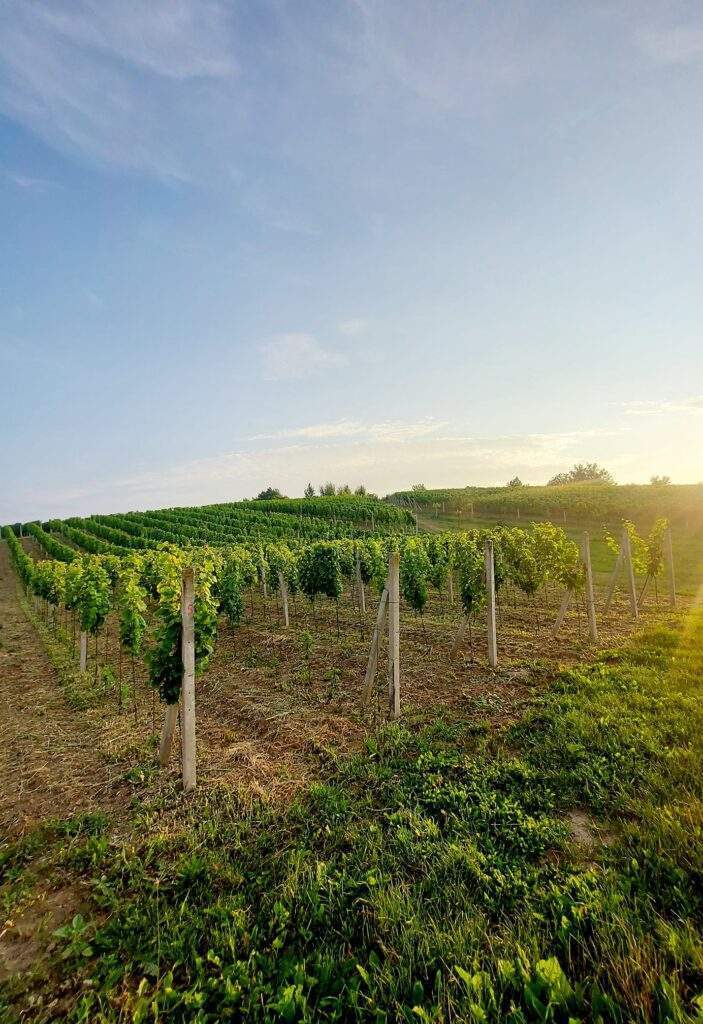
What is your attitude towards natural or authentic wines?
It bothers me if the so-called authenticist “hides” behind sick or diseased wines. I really don’t want to drink such wines. Even an authentic wine can be made beautifully fruity. My red wines from barrels are authentic – nothing extra in them, spontaneously fermented, not chilled, made by gravity, without filtration and clarification. Basically, these are unsulphured wines with only 50mg/l of natural sulphur, so they “fit” into the normal limit of authentic wines. In my wines, however, you will not definitely find oxidative tones etc., unlike many so-called authenticists.
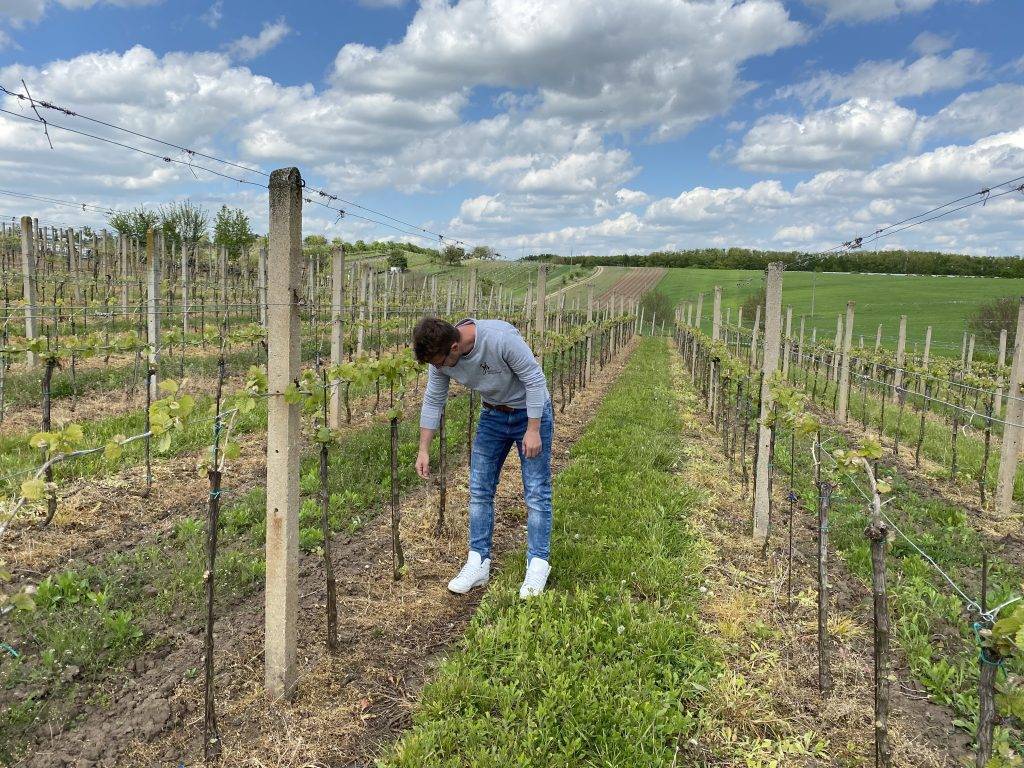
What is your winemaking dream?
I had big dreams when I was young. As the years go by, I would like to start a family, so my winemaking dreams take a bit of a back seat. I would like to create wines of the best possible quality, which I will stand behind and which will sell well – all this in a family circle. I definitely don’t see it as some kind of expansion and growth, but rather an increase in quality on a smaller number of hectares. I would also like to continue to focus on folklore and support events in our village.
